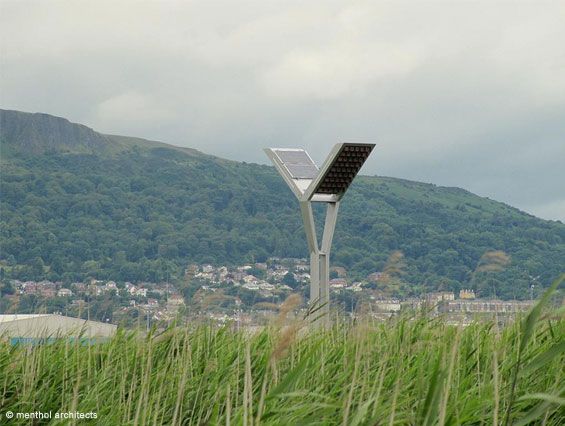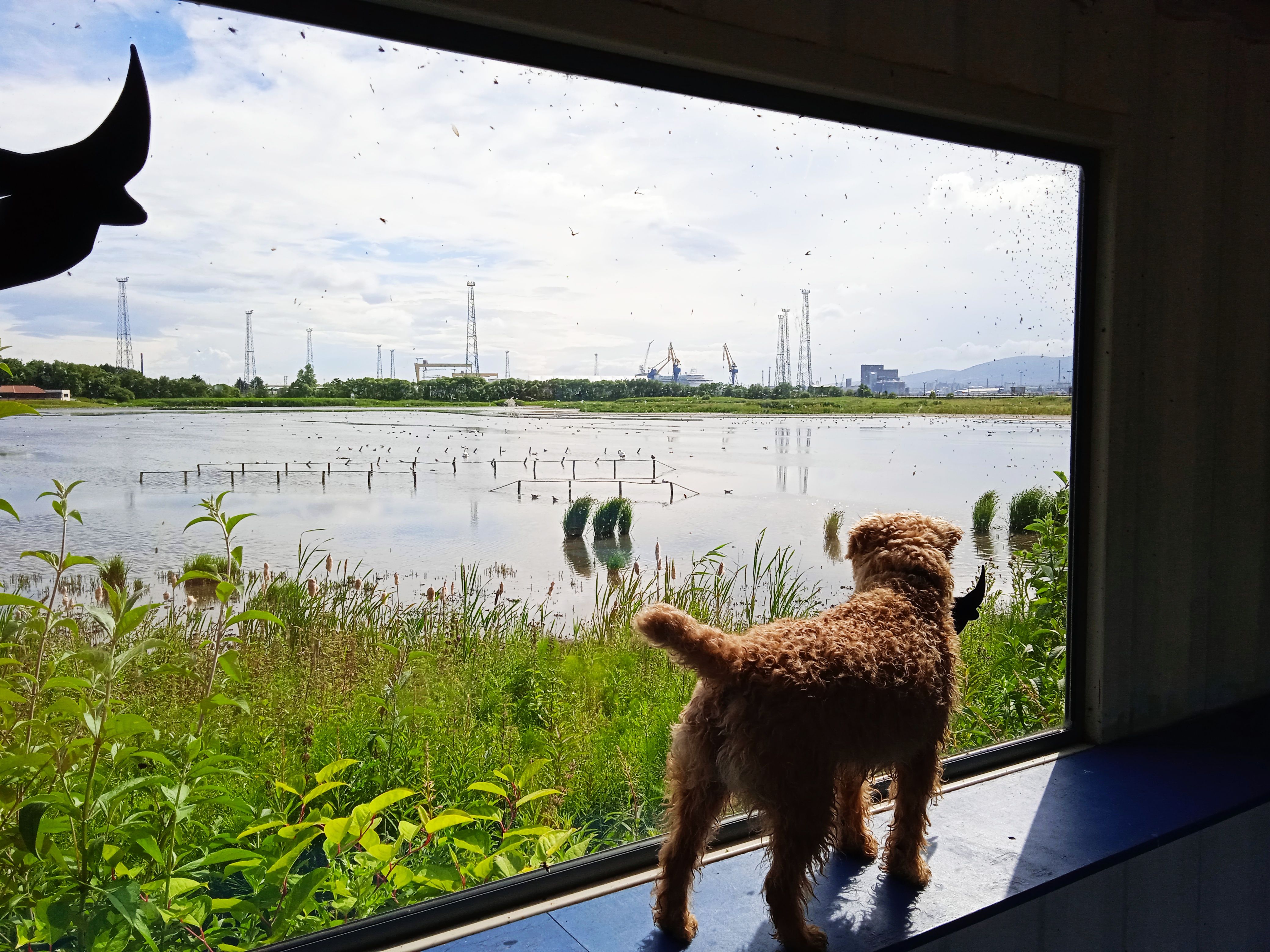WEE Mac was dying to get inside to create havoc. The terrier could hear the absolute racket going on on the other side of the perimeter fence – the calls and squawks of what sounded like a million birds.
But this nature reserve at Belfast Port is totally secure, the best Dúlra could do was lift him on to the windowsill so he could look longingly out at the multitude of wild creatures as far as the eye could see.
But these birds – a truly incredible number and variety – were untouchable.
And not just from dogs. A strong wire fence surrounds the Window on Wildlife, keeping out all sorts of predators, from foxes to mink.
But as Dúlra walked the beautiful wooded pathway around the perimeter, he realised what it was that really made this place unique when he saw a thin wire along the top of the fence which was aimed to keep out the greatest predator of them all – people. The wire had a sign which read: ‘Don’t touch – electric shock.’
The exclusion of people allows nature to behave, well, naturally. There’s no-one walking their dogs by the water’s edge, nobody riding a bike along the beach, no cars crushing birds’ eggs. And that safety is what nature deserves.
Comparing the wildlife on that side of the fence with the side we were on was like a desert next to a jungle.
There are vast stretches of wilderness at the Harbour Estate all around the Window on Wildlife reserve, and Dúlra walked a lot of it for a couple of hours on Sunday. It looked like prime breeding ground for birds, with wild flowers growing from the stoney earth. But the only birds he saw were those flying overhead on their way to the reserve.
And the most spectacular of those were the terns. Every 30 seconds one would fly just overhead from the direction of Larne, each with a shiny silver eel-like fish in its beak. RSPB staff at the Window on Wildlife float out an island for terns to breed on, waiting as late as possible so the black-headed gulls don’t claim all the breeding spots before the terns arrive from Africa.
EMPTY: The unused swift tower
Common terns and the even more swallow-like arctic terns breed here. Dúlra followed them, greabhróg in Irish, in the hope of finding their fishing grounds. He had to walk a couple of hundred yards around the coast, but it was worth it.
Terns are cursed by their similarity to gulls - they are for Dúlra a different class, slick and toned. Dúlra took a seat on the rocks as they folded their wings and divebombed into the sea about 30 feet away, each surfacing with a shiny fish to feed their young. If a gull tried that, it would be an embarrassing belly-flop!
Dúlra followed the terns back to the reserve. This time he decided to ignore the breeding land birds and admire the skies. Not only does this reserve host thousands of rare waders and ducks, but it somehow attracts an army of swifts, swallows, house and sand martins.
There were hundreds of swifts in the air above the lake, dining on the flies which had hatched in the shallow water. The swifts were dazzling, always managing to avoid each other. Just across the way an air control tower with all sorts of radar helps planes land safely at George Best Airport. These high-speed birds show that nature does it best.
A giant swift tower was built here six years ago, with countless nestboxes. Dúlra studied it with his bins for a good while, but not a single swift went near it. All those great homes, with no takers.
Swifts are notoriously cautious about choosing new nestsites – it’s said that it takes at least seven years for a place to be accepted. 2022 might be an even better year for the Window on Wildlife.
If you’ve seen or photographed anything interesting,or have any nature questions, you can text Dúlra on 07801 414804.







